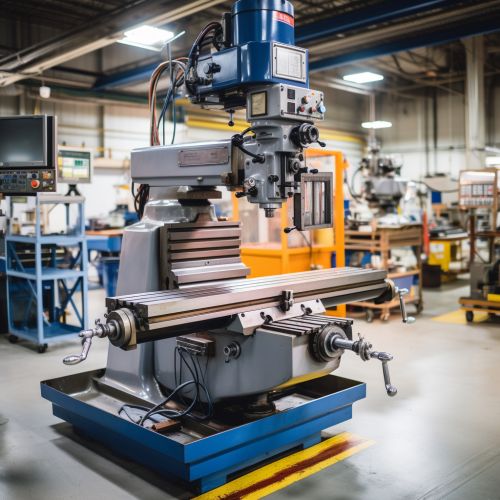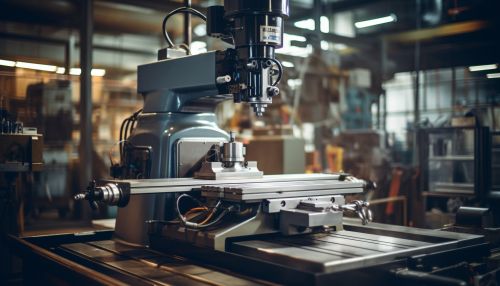Milling (machining)
Introduction
Milling is a fundamental machining process that involves the use of rotary cutters to remove material from a workpiece. This process is typically used in the manufacturing industry to produce parts of various shapes and sizes. Milling is a versatile and efficient method of machining that can produce complex shapes with high precision.
History
The history of milling can be traced back to the 19th century when the first milling machine was invented by Eli Whitney in 1818. This machine was designed to produce musket parts at a faster rate, thus revolutionizing the manufacturing industry. Over the years, advancements in technology have led to the development of more sophisticated and efficient milling machines.


Types of Milling
Milling can be classified into various types based on the orientation of the spindle, the type of workpiece, and the degree of motion.
Horizontal Milling
In horizontal milling, the spindle is oriented horizontally, and the cutters are mounted on a horizontal arbor. This type of milling is commonly used for slotting and gear cutting.
Vertical Milling
In vertical milling, the spindle is oriented vertically, and the cutters are held in a vertical spindle. This type of milling is typically used for die sinking and similar operations.
Plain Milling
Plain milling, also known as slab milling, involves the use of a plain milling cutter to produce a flat surface on the workpiece. The cutter rotates on an axis perpendicular to the workpiece.
Face Milling
In face milling, the cutting action occurs primarily at the end corners of the milling cutter. This process is used to cut flat surfaces into the workpiece, or to cut flat-bottomed cavities.
Angular Milling
Angular milling is a process where the cutter is angled to the surface of the workpiece. This type of milling is used to produce angular features such as chamfers, serrations, and grooves.
Form Milling
In form milling, the cutter is shaped to the contour to be cut, allowing for the machining of irregular shapes and contours.
Milling Operations
Milling operations can be classified into two main categories: peripheral milling and face milling.
Peripheral Milling
In peripheral milling, also known as slab milling, the axis of cutter rotation is parallel to the workpiece surface. This operation is typically used to produce flat surfaces and slots.
Face Milling
In face milling, the axis of cutter rotation is perpendicular to the workpiece surface. This operation is typically used to produce flat surfaces and to cut large, flat-bottomed cavities.
Milling Machines
There are various types of milling machines used in the industry, each designed for specific milling operations.
Column and Knee Type Milling Machine
The column and knee type milling machine is the most common type of milling machine. It consists of a column that supports the spindle and a knee that supports the worktable.
Fixed Bed Type Milling Machine
The fixed bed type milling machine is a more robust and heavy-duty machine compared to the column and knee type. It is designed for heavy milling operations and for machining large workpieces.
Planer Type Milling Machine
The planer type milling machine is a large machine that combines both milling and planing operations. It is typically used for machining large workpieces.
Milling Cutters
Milling cutters are the tools used in the milling process to remove material from the workpiece. They come in various shapes and sizes, each designed for specific milling operations.
Plain Milling Cutter
The plain milling cutter is the most common type of milling cutter. It is used for slab milling and straddle milling.
Side Milling Cutter
The side milling cutter has cutting teeth on its sides and circumference. It is used for side milling and slotting.
End Mill
The end mill is a type of milling cutter that is used for face milling, profile milling, and plunge milling.
Form Milling Cutter
The form milling cutter is designed to mill specific shapes into the workpiece. It is used for form milling operations.
Conclusion
Milling is a versatile and efficient machining process that is widely used in the manufacturing industry. With advancements in technology, milling machines and milling cutters have evolved to meet the increasing demands of the industry. Despite its complexity, the fundamental principles of milling remain the same: the use of a rotating cutter to remove material from a workpiece.
